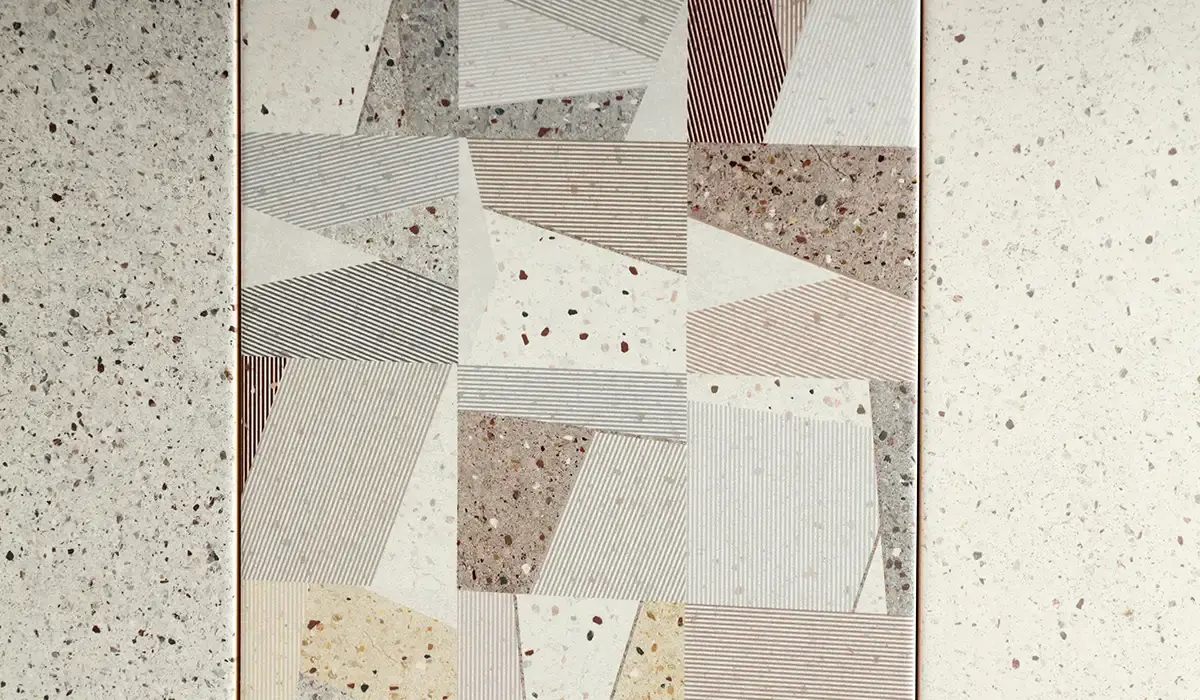Flooring
Terrazzo Explained: A Guide to the Trendy Material

Terrazzo Material Style Guide: Everything You Need to Know Before Installing
Terrazzo has earned a reputation for timeless elegance, and this Terrazzo Material Style Guide will help you embrace it confidently.
This eye-catching material blends marble, glass, quartz, and granite chips within cement, creating stylish, durable surfaces for modern homes.
Homeowners, designers, and builders alike love terrazzo for its affordable luxury, long-lasting durability, and versatile indoor or outdoor applications.
Whether you’re remodeling floors, backsplashes, or patios, this Terrazzo Material Style Guide covers essential installation tips, cost insights, and style inspiration.
Understanding Terrazzo’s Origins and Modern Appeal
Terrazzo originated in ancient Egypt but gained fame in Italy during the 16th century as a method for reusing leftover stone chips.
Its artistic appearance and impressive resilience made terrazzo ideal for high-traffic areas, including hotels, schools, and residential kitchens or bathrooms.
Today, terrazzo adds elegance to floors, countertops, walls, or patios, offering design flexibility with available pre-cut tiles or poured custom patterns.
You can customize terrazzo using endless color combinations, chip sizes, and layout patterns like classic checkerboard, modern mosaic, or minimalist speckle.
Designers often recommend terrazzo to clients who want bold visual impact without sacrificing durability, cost-effectiveness, or long-term performance.
Different Types of Terrazzo Systems
Various terrazzo systems offer unique benefits based on installation method, weight, and surface type. Choose the right system for your project.
Epoxy (Thin-Set Epoxy)
This version is ideal for residential or commercial interiors. Epoxy terrazzo is durable, thin, and allows for vibrant color customization.
Polyacrylate
With breathability and outdoor durability, polyacrylate terrazzo uses fine stone chips for slip-resistant, weather-friendly outdoor patios or pool decks.
Sand Cushion
Reinforced with wire mesh, sand cushion terrazzo handles heavy foot traffic in malls, hospitals, and commercial spaces without cracking or breaking.
Monolithic
Lightweight and cost-effective, monolithic terrazzo works well indoors, especially in schools, offices, or public areas needing fast installation.
Bonded System
This version combines thin design with substantial weight. Professionals recommend bonded terrazzo for commercial installs with limited color or design flexibility.
Rustic Finish
Rustic terrazzo features a textured surface that’s slip-resistant and perfect for exterior installations like walkways, driveways, and backyard spaces.
Terrazzo Tiles Installation Steps
DIYers can successfully install terrazzo tiles with patience and planning. This Terrazzo Material Style Guide outlines step-by-step tile installation instructions.
Step 1: Measure the Space
Measure room length and width accurately. Multiply dimensions to determine square footage and include extra tiles for cutting or design adjustments.
Step 2: Prepare the Subfloor
Clear old flooring completely. Use a leveling compound if needed. Ensure a clean, flat, and smooth surface for proper terrazzo tile adherence.
Step 3: Apply Adhesive
Spread flooring adhesive evenly across the surface. Start laying tiles neatly, aligning edges tightly to avoid gaps or uneven positioning.
Step 4: Finish and Seal
Press tiles firmly in place. Let them settle for 48 hours. Grout joints, then apply water-based or permanent sealer to protect surfaces.
Terrazzo Maintenance Best Practices
Once installed, terrazzo requires minimal upkeep but benefits from smart care. Follow this Terrazzo Material Style Guide to maintain lasting beauty.
Sweep floors regularly to remove dirt. Mop weekly using neutral pH cleaners. Avoid harsh chemicals that might etch, dull, or damage the surface.
Use coasters or heat-resistant pads on terrazzo countertops. Spills should be cleaned immediately to avoid staining or moisture absorption through unsealed pores.
Buff the floor with a soft cloth or machine polisher occasionally to revive terrazzo’s natural shine and keep it looking new.
Cost Breakdown: How Much Terrazzo Costs
Terrazzo pricing varies based on tile type, material quality, and labor fees. Pre-made terrazzo tiles usually cost under $12 per square foot.
Poured terrazzo costs less than $15 per square foot. However, labor can push total costs up to $35 per square foot installed.
Smaller projects like bathroom backsplashes or DIY terrazzo decor may help you control expenses while still enjoying the elegance of the material.
If you’re not confident about self-installation, hiring a professional ensures that your terrazzo system is sealed, aligned, and finished correctly.
Is Terrazzo Flooring the Right Choice for You?
Terrazzo provides timeless value, strong visual appeal, and remarkable longevity. It impresses guests and stands up against heavy daily foot traffic.
Still, terrazzo isn’t perfect. It may feel cold underfoot during winter, and historic terrazzo sometimes contains asbestos in older homes.
If you plan on changing your flooring style often, terrazzo might not be ideal since it’s designed for permanence and durability.
However, when you want something bold, timeless, and eco-friendly, this Terrazzo Material Style Guide confirms terrazzo is a top contender.
Final Thoughts
Use this Terrazzo Material Style Guide as your go-to resource for planning, installing, and caring for one of today’s trendiest surfaces.
Explore more inspiring design ideas, home improvement insights, and expert guides by visiting our website for the latest updates and articles.
